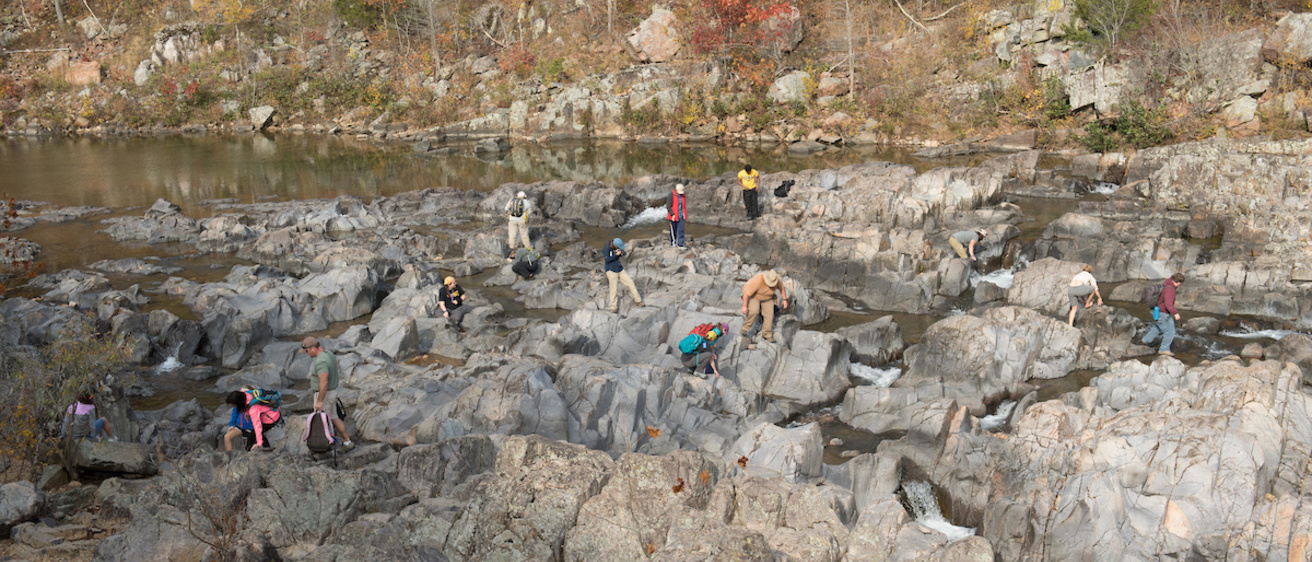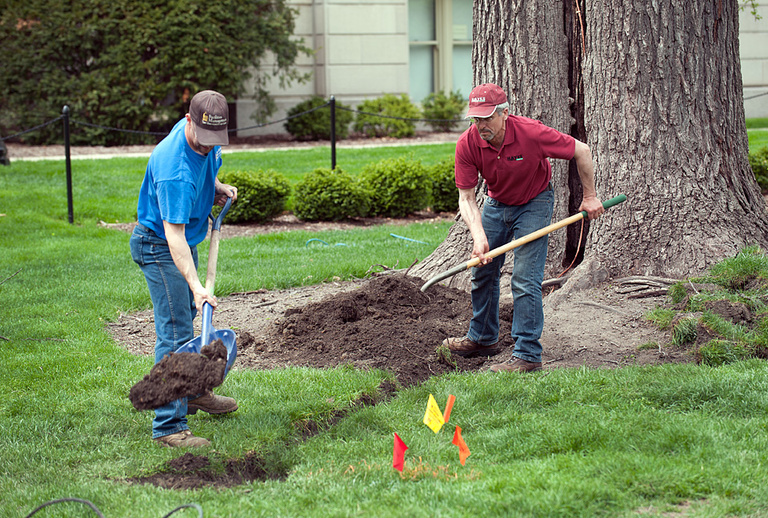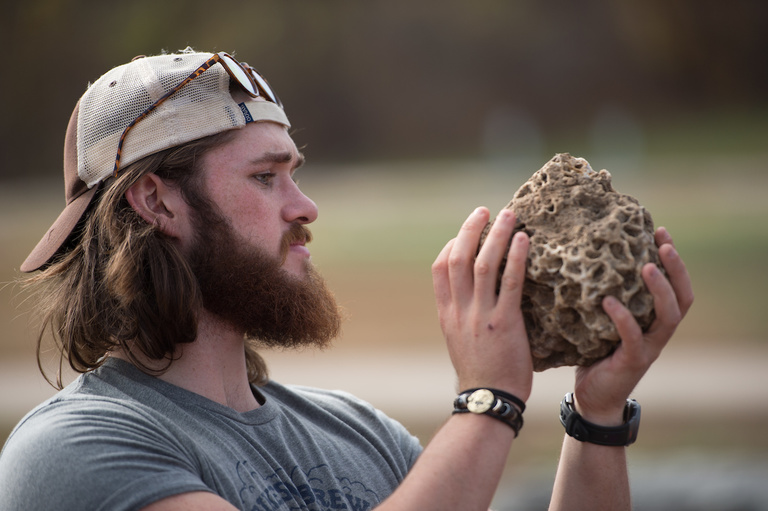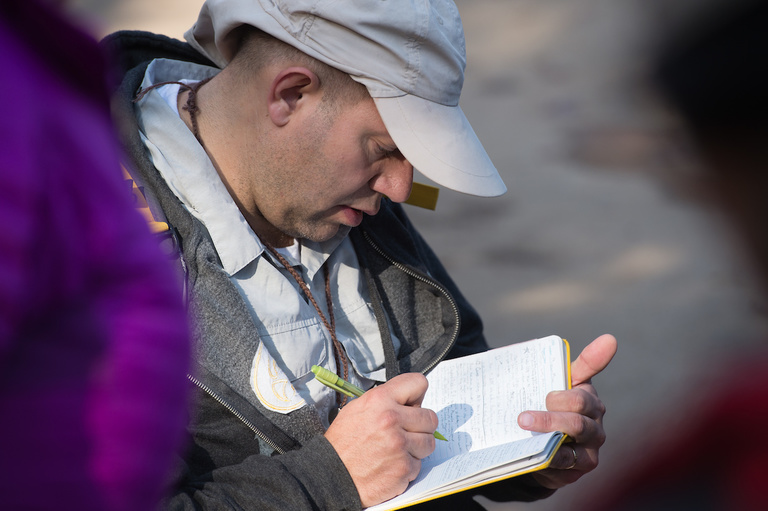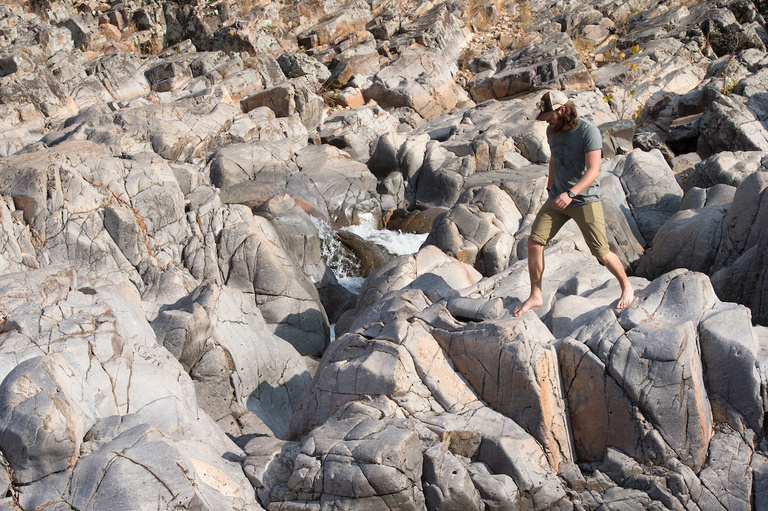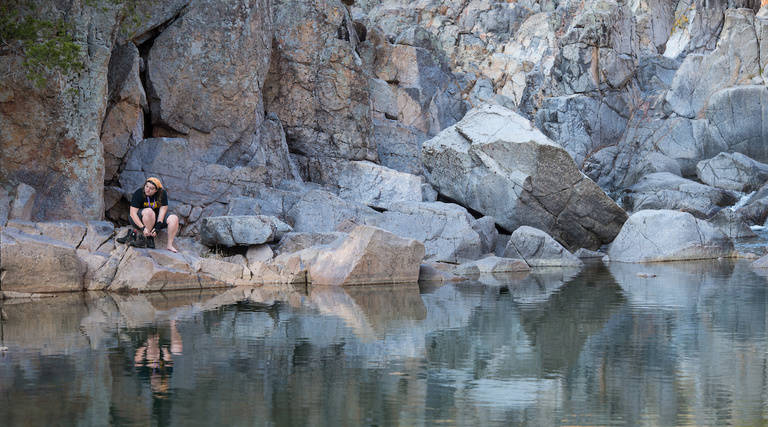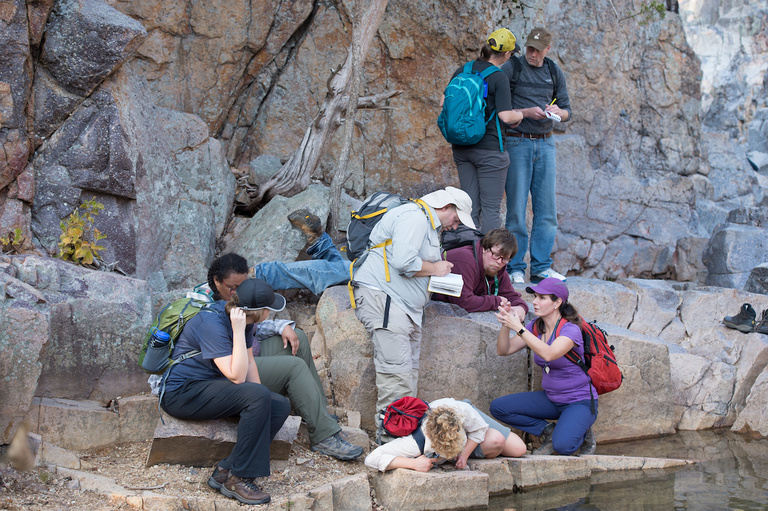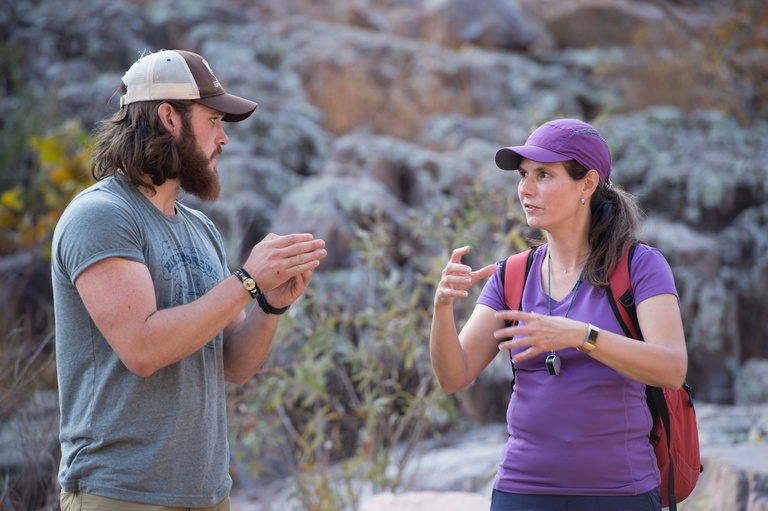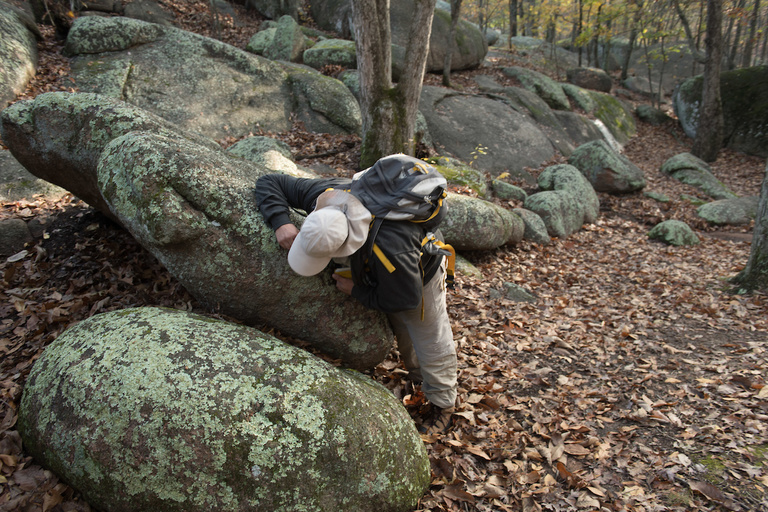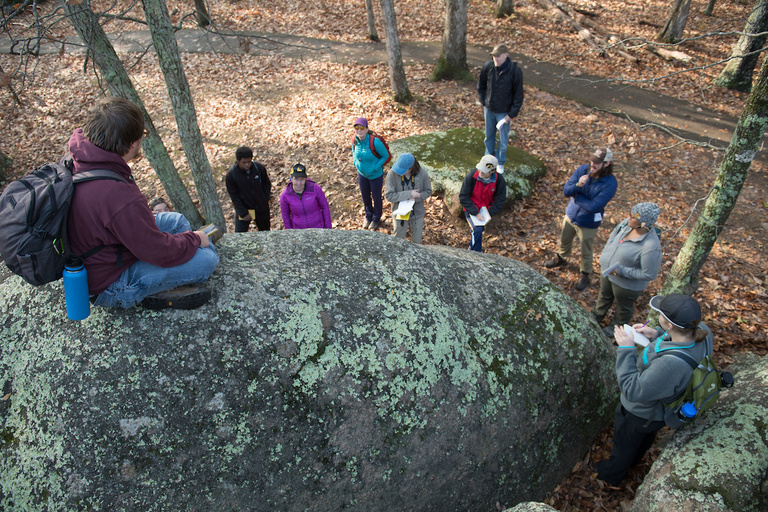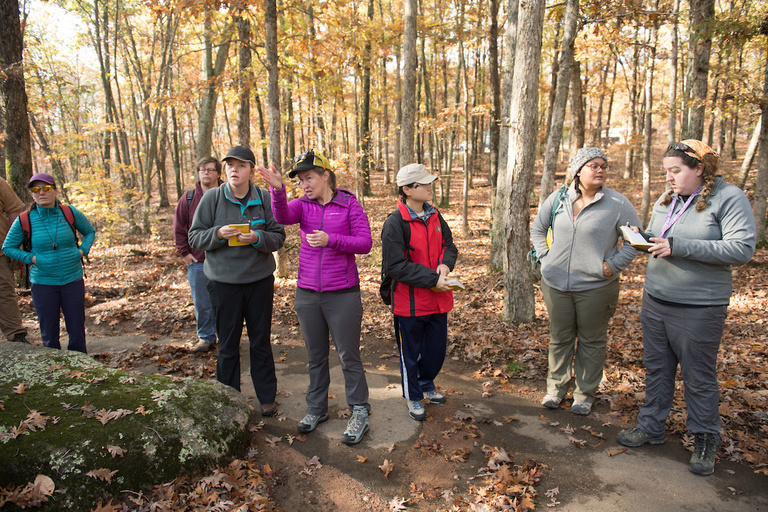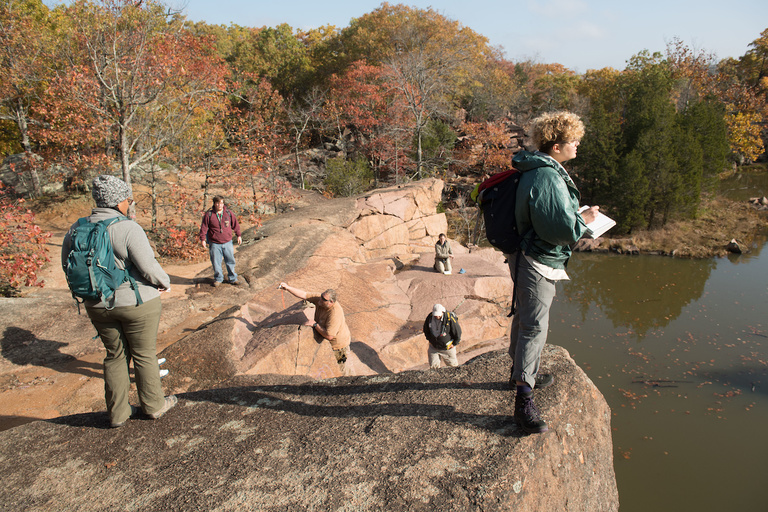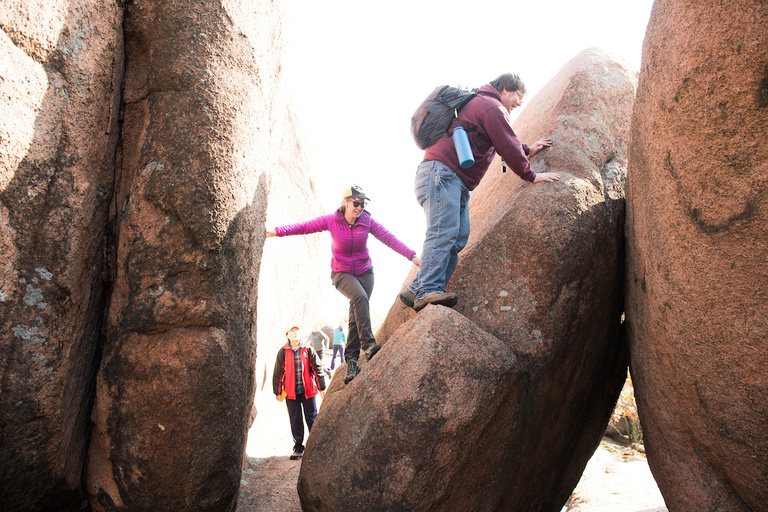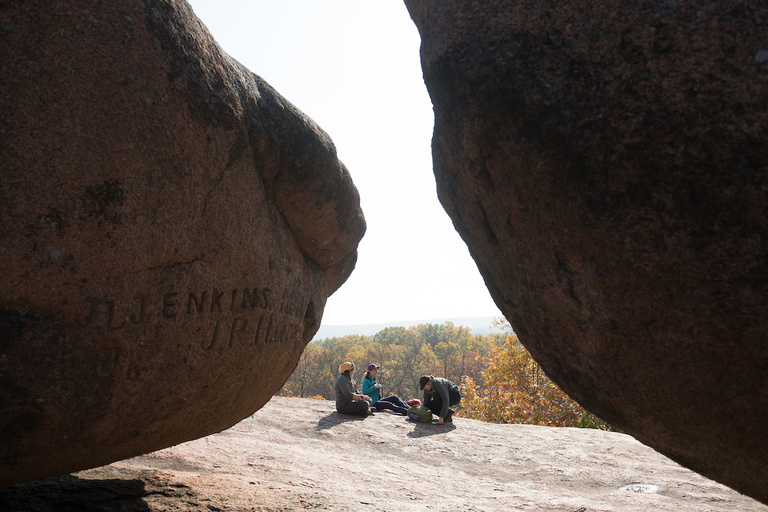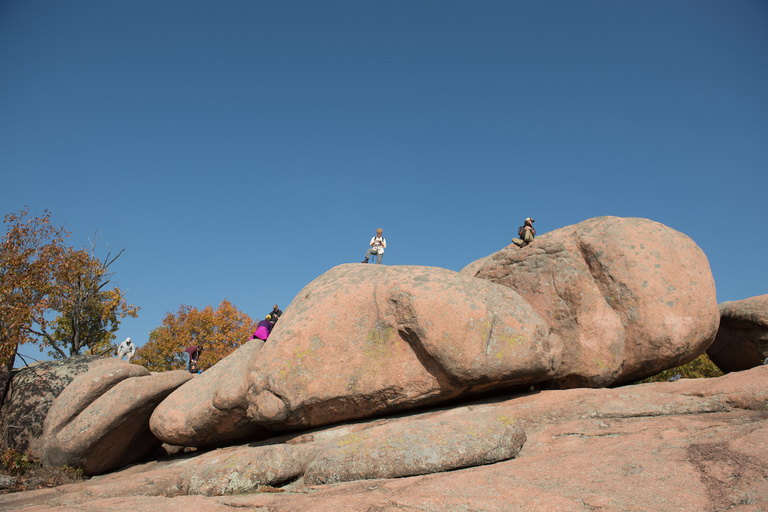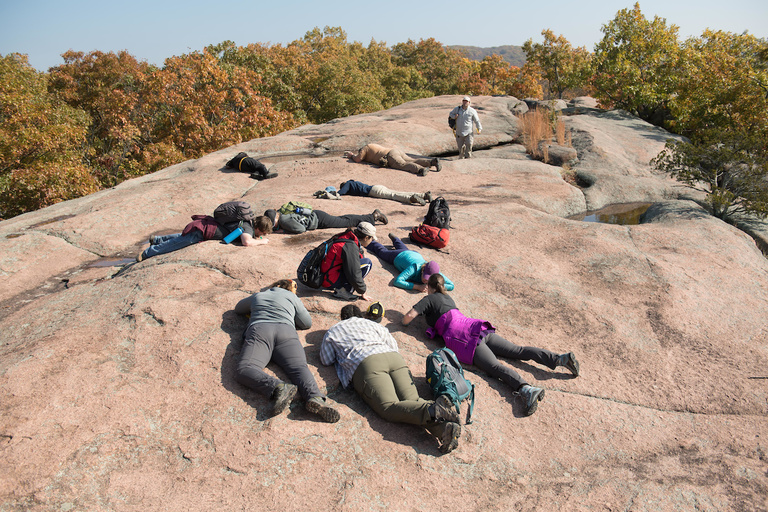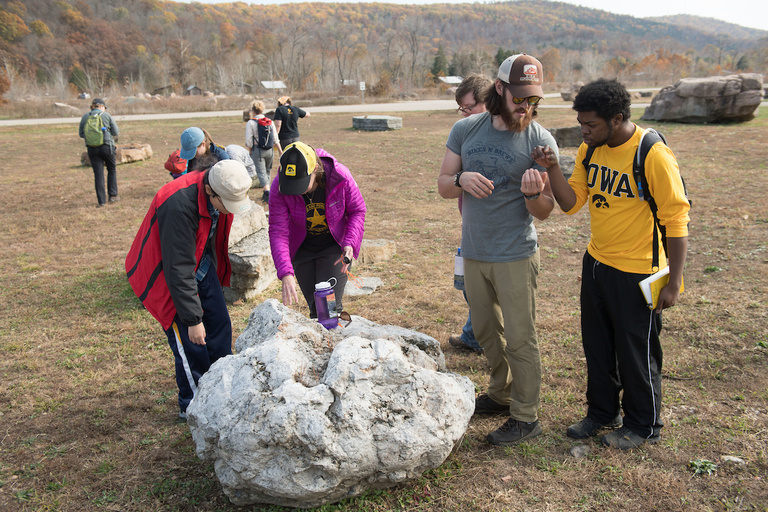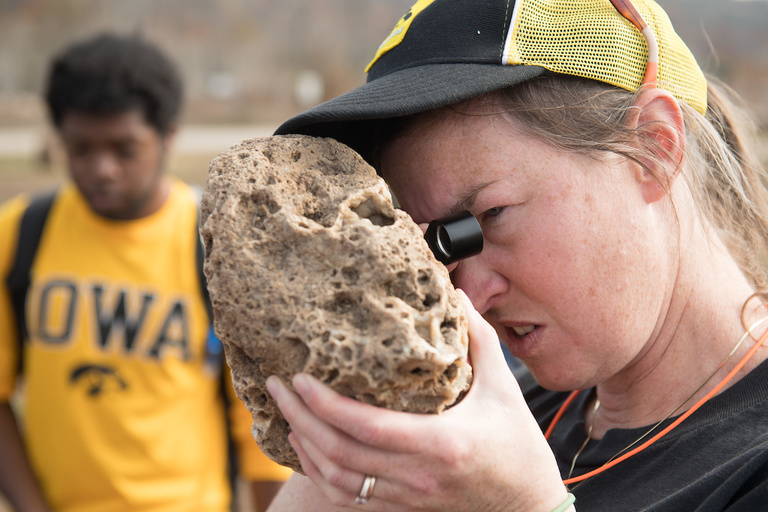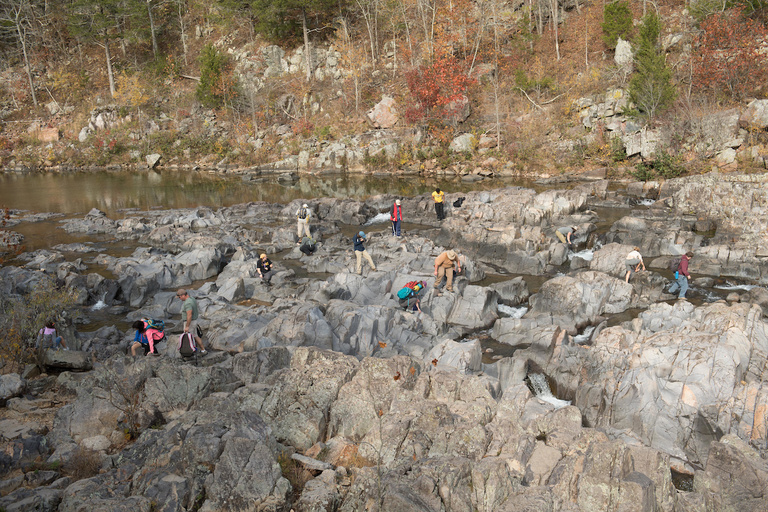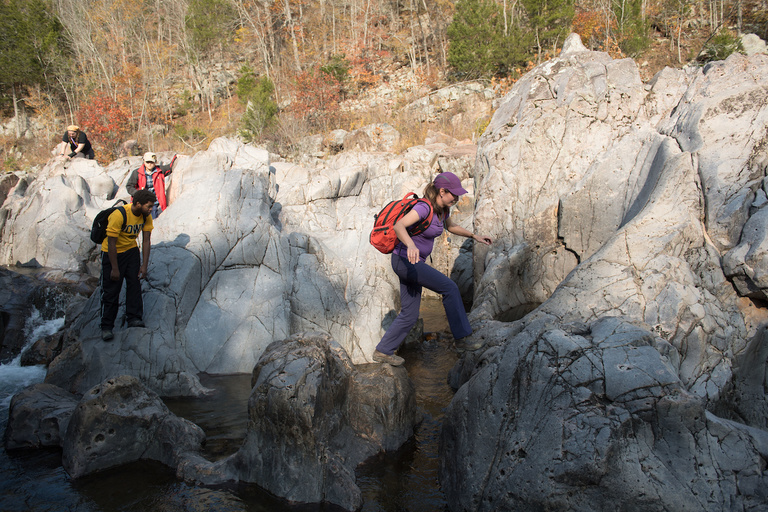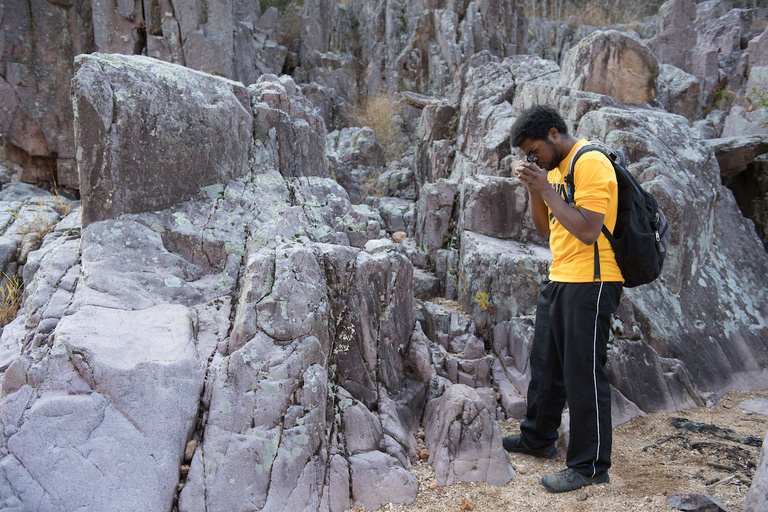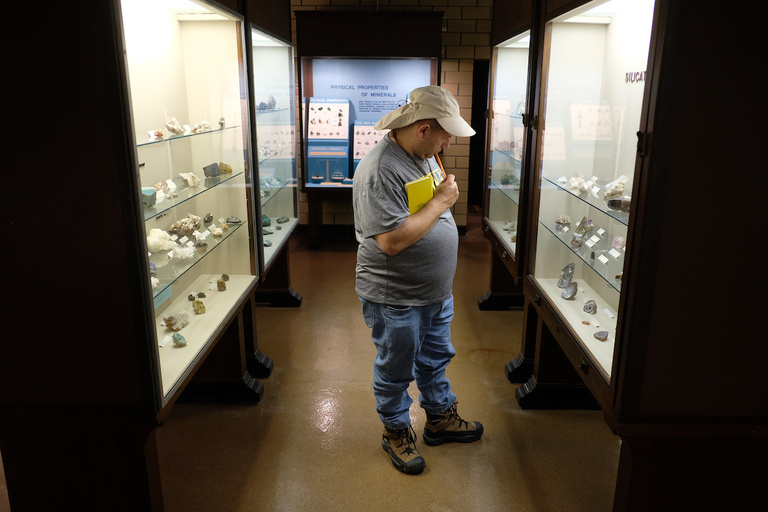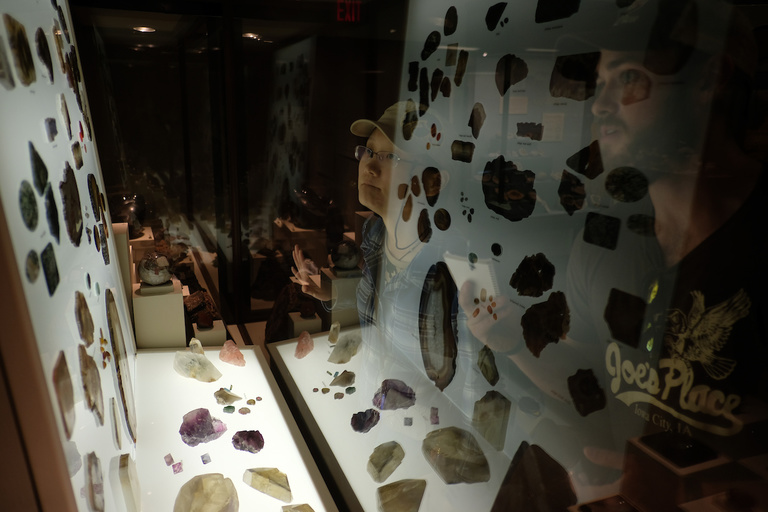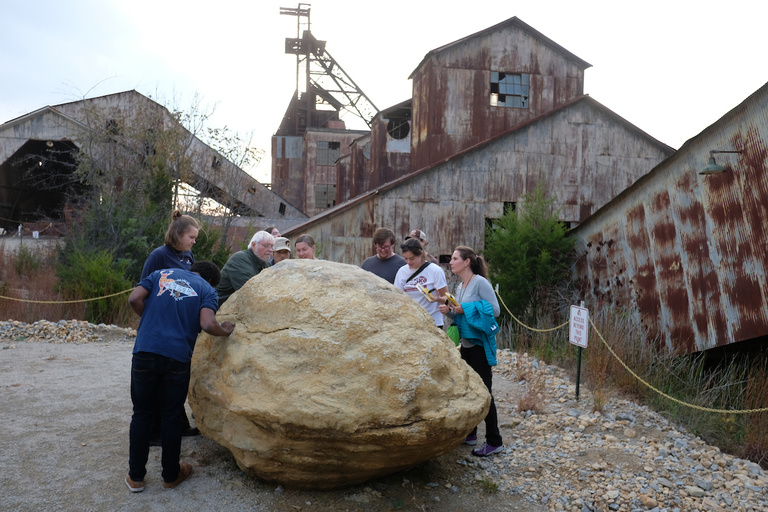When you’re a geology student, you live for field trips.
Earlier this month, a group of University of Iowa juniors and seniors, along with two faculty members in the University of Iowa Department of Earth and Environmental Sciences, ventured to sites in southeast Missouri to do what they enjoy most: Examine rocks up close and in the setting in which they were birthed and shaped over eons.
For these geology majors, the three-day excursion was a critical outdoor complement to the terminology and concepts they’ve been learning in the classroom.
The trip allowed students “to take a lot of the science and see how it’s working in the real world,” says Kate Tierney, lecturer in earth and environmental sciences and faculty organizer of the department’s student field trips, which include this annual outing, EES 3001, as well as for-credit treks to Big Bend State Park in Texas, the Bahamas, and other geologically rich locales.
In Missouri, the students clambered over gargantuan boulders more than a billion years old in the aptly named Elephant Rocks State Park, got down on their bellies to examine a formation of volcanic rocks since carved into a watery labyrinth at Johnson’s Shut-In State Park, and examined sheer dolostone walls along roads throughout the region.
Tierney chose Missouri due to the state’s rich geological tapestry, its ancient and hugely violent volcanic activity, and its easy driving distance. The field trip gave students the opportunity to get a feel for geological history as it unfolded, much like peeling back chapters in a very old book.
“It sticks with you when you see it,” says Matt Trembath, a senior and U.S. Air Force veteran from Promise City, Iowa.
Another senior, Kendall Ritchie, clearly was in his element. After all, Ritchie, from Davenport, Iowa, asked for a rock hammer on his fifth birthday. He has been passionate about geology ever since and has a personal rock collection of 140 specimens, which he added to with a purchase at the Missouri Mines State Historic Site, where the group stopped on its way to the geological formations.
